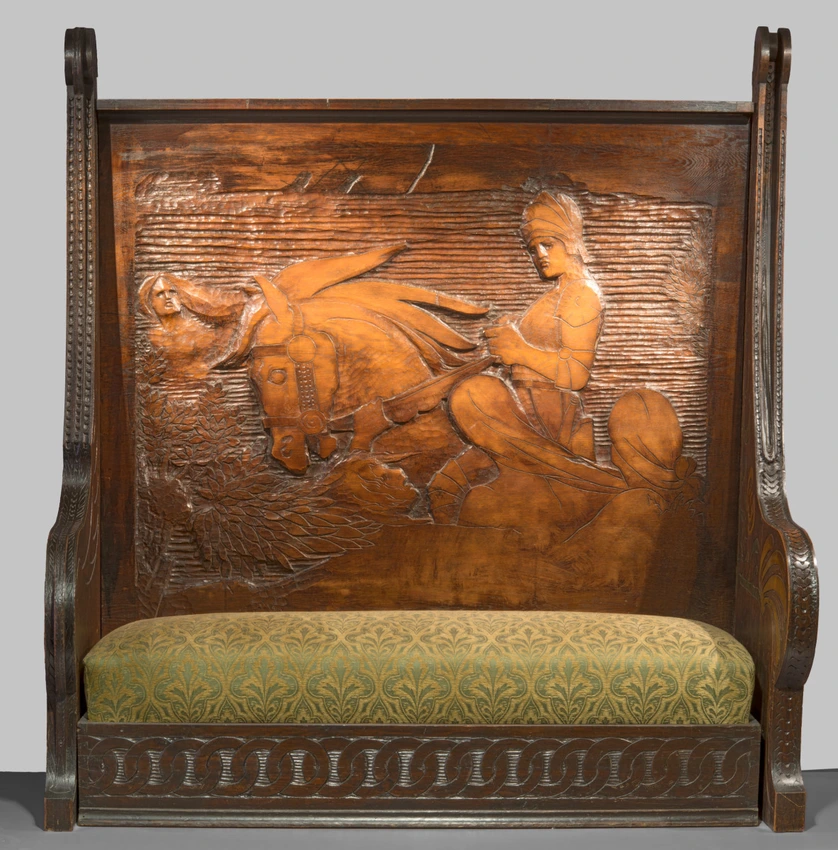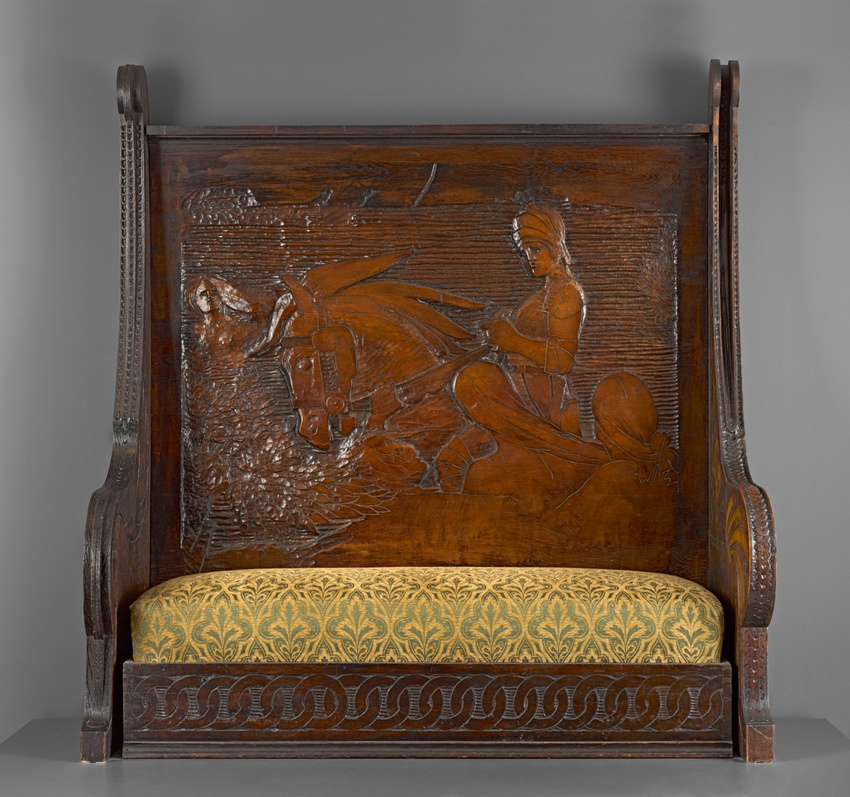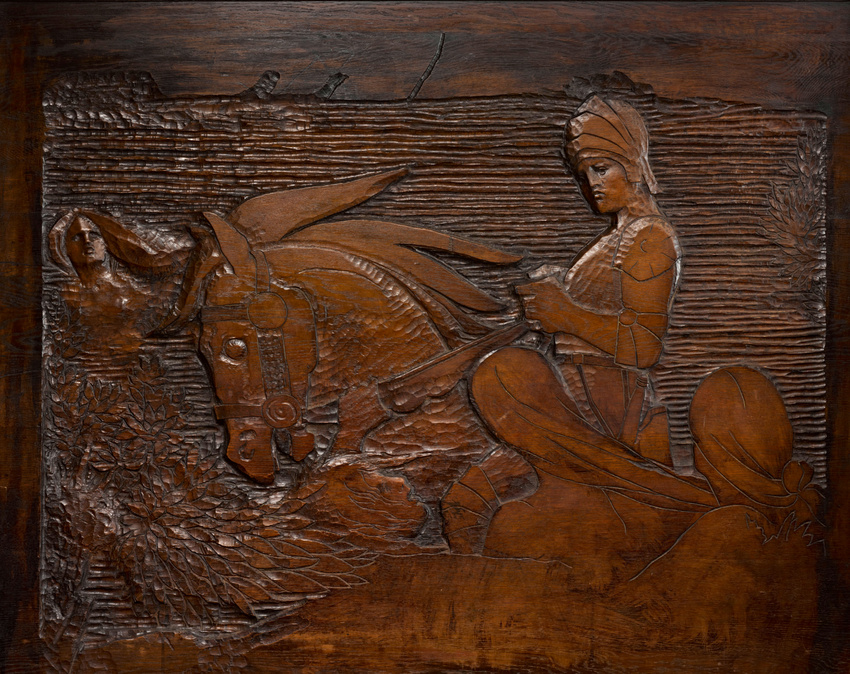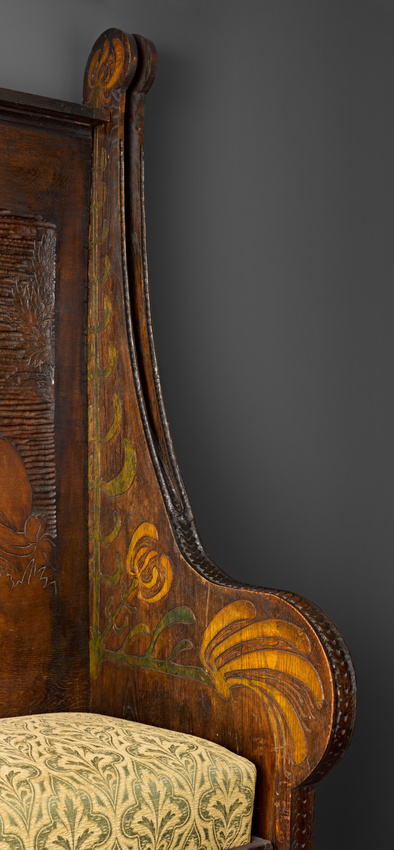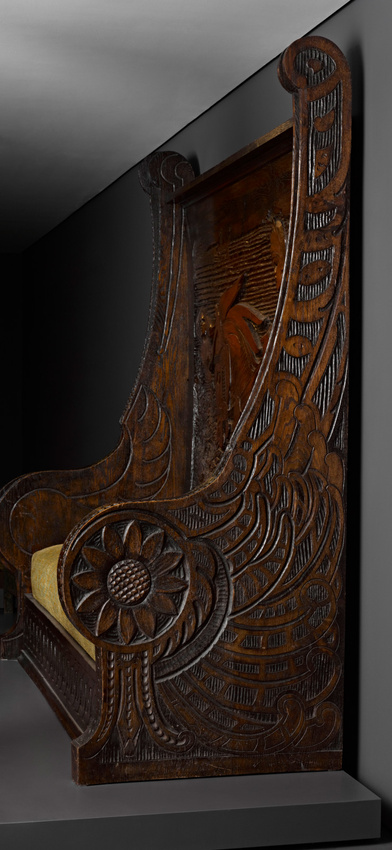Banquette à dossier
Stephan Sinding was without doubt one of the most famous Scandinavian sculptors of his time: Carl Jacobsen gave him pride of place in the museum he founded in Copenhagen in 1888, the Ny Carlsberg Glyptotek, and he was commissioned to design many large commemorative monuments for the cities of Bergen and Christiana (now Oslo).
Having studied variously in Christiana, Berlin, Paris and Rome, Sinding developed his own syncretic style combining Naturalism and National Romanticism. His most emblematic works are The Hammer of Volundr (Oslo, Najonalgalleriet), Heimdall, Valhalla (Copenhagen, Ny Carlsberg Glyptotek) and the spectacular Valkyrie in the Langelinie Park in Copenhagen.
The sculptor made forays into the area of the decorative arts by producing models for bas-reliefs for the porcelain manufacturers Bing & Grøndhal of Copenhagen, and chryselephantine statuettes retailed by the Berlin firm Keller & Reiner, but mainly by creating several pieces of furniture for his own use, including this impressive bench seat.
Owing much, from a typological view, to the models extolled by Viollet-le-Duc and by the Arts & Crafts movement of William Morris, its decoration has references to Symbolism tinged with Wagnerism: should one see in the bas-relief adorning the backrest, an allusion to Parsifal assailed by Klingsor's flower maidens or Siegfried listening to the laments of the Rhinemaidens?
